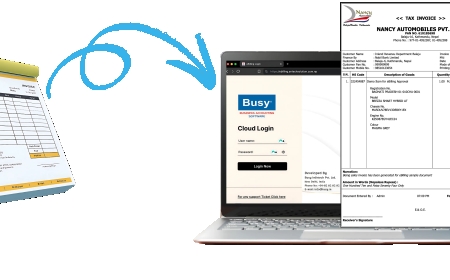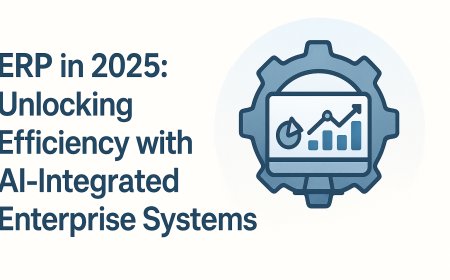Best 6 Practices for Optimizing Mobile App Speed and Efficiency
A slow or unresponsive mobile application can quickly lead to user frustration, high uninstallation rates, and ultimately, a negative impact on a business's reputation. In today's competitive digital landscape, speed and efficiency are not just desirable features; they are fundamental requirements for a successful app. For any Mobile App Development Agency, mastering the art of optimization is key to delivering high-quality products that meet user expectations and stand out in the marketplace.
Optimizing app speed and efficiency involves a multi-faceted approach, touching upon various aspects of development from code structure to network interactions. Here are six best practices that every developer should prioritize:
1. Efficient Code and Resource Management
The foundation of a fast and efficient app lies in its underlying code and how it manages resources. Bloated code, unnecessary computations, and inefficient algorithms can quickly lead to performance bottlenecks, especially as the app scales or as new features are added.
Key techniques:
-
Code Optimization: Write clean, modular, and reusable code. Avoid redundant calculations and prefer efficient algorithms and data structures for tasks. For example, using
SparseArrayoverHashMapfor integer-to-object mappings in Android can be more memory efficient. -
Minimize App Size: A smaller app size means faster downloads, quicker installations, and less storage consumption on a user's device. This can be achieved by:
-
Removing Unused Code and Resources: Regularly audit your codebase for deprecated or unused assets, libraries, and code segments. Tools like ProGuard or R8 (for Android) can help shrink, optimize, and obfuscate your code.
-
Utilizing App Bundles: For Android apps, using Android App Bundles allows Google Play to generate and serve optimized APKs for each user's device configuration, containing only the necessary resources.
-
Optimizing Libraries: Be selective about third-party libraries. If a library is used for only a small feature, consider implementing that feature natively or finding a more lightweight alternative.
-
-
Resource Compression: Ensure all static assets, particularly images, videos, and audio files, are compressed without compromising quality. Use modern formats like WebP for images where supported, as they offer better compression than JPEGs or PNGs.
2. Streamlined UI and UX Rendering
A visually rich app with complex user interfaces can be demanding on device resources, leading to slow rendering, janky animations, and unresponsive touch interactions. Optimizing the UI/UX ensures a smooth and fluid user experience.
Key techniques:
-
Flatten View Hierarchies: Deeply nested layouts increase the time it takes for the UI to be drawn on the screen. Aim for flatter view hierarchies using powerful layout managers like
ConstraintLayout(in Android) or SwiftUI's flexible containers (in iOS) to minimize nesting. -
Minimize Overdraw: Overdraw occurs when the system draws the same pixel multiple times on the screen, wasting CPU and GPU cycles. Identify and eliminate unnecessary backgrounds, overlapping views, and transparent layers where opaque alternatives are suitable.
-
Efficient Animations and Transitions: While animations enhance user experience, poorly optimized ones can cause performance drops. Use lightweight animations, ensure they run smoothly at 60 frames per second (FPS), and avoid complex computations during animation cycles. Consider using hardware acceleration for UI rendering where beneficial.
-
Lazy Loading UI Components: Load only the UI components that are immediately visible or essential for the initial user interaction. Defer the loading of off-screen elements or less critical components until they are needed, improving initial rendering speed.
-
Responsive Layouts: Design layouts that adapt efficiently to various screen sizes, densities, and orientations, ensuring consistent performance across the diverse device ecosystem.
3. Optimized Network Operations and Caching
Mobile apps frequently rely on network communication to fetch and send data. Inefficient network requests, unoptimized data payloads, and a lack of caching can lead to slow loading times, increased data consumption, and higher battery drain.
Key techniques:
-
Minimize Network Requests: Reduce the number of API calls by combining multiple small requests into a single, larger one (batching). Limit the frequency of data synchronization to only when absolutely necessary or at strategic intervals.
-
Efficient Data Transfer: Compress data payloads (e.g., using GZIP for JSON responses) before sending them over the network. Choose lightweight data interchange formats like JSON over XML. Send only essential data, avoiding unnecessary fields.
-
Robust Caching Strategies: Implement aggressive caching for frequently accessed data. Store images, static content, and frequently requested API responses locally on the device. Define clear cache invalidation policies to ensure data freshness without excessive network calls.
-
Offline Mode Support: For content-driven apps, implementing an offline mode allows users to access previously loaded data even without an internet connection, significantly improving perceived speed and usability in areas with poor connectivity.
-
Utilize Content Delivery Networks (CDNs): For apps that serve a global audience, using a CDN can significantly reduce network latency by serving content from servers geographically closer to the user.
4. Smart Memory Management
Memory management is crucial for app stability and performance, especially on devices with limited RAM. Poor memory handling can lead to memory leaks, out-of-memory errors, and frequent garbage collection cycles that cause app freezes and crashes.
Key techniques:
-
Identify and Resolve Memory Leaks: Regularly use profiling tools (like Android Studio Profiler, Xcode Instruments) to detect memory leaksobjects that are no longer needed but are still referenced, preventing them from being garbage collected. Ensure proper object lifecycle management.
-
Release Resources Promptly: Release resources (e.g., bitmaps, large data structures, network connections, database cursors) as soon as they are no longer needed.
-
Efficient Data Storage: Choose the right data storage mechanisms. For temporary data, in-memory caches are fast. For persistent data, use optimized databases (like Room for Android, Core Data or Realm for iOS) and ensure efficient queries.
-
Object Pooling: For objects that are frequently created and destroyed, implementing an object pool can reduce the overhead of constant memory allocation and deallocation.
-
Avoid Large Objects: Be cautious with large objects, especially bitmaps. Scale images down to the required display size before loading them into memory.
5. Optimize App Startup Time
First impressions matter. A slow app launch can deter users instantly. Optimizing startup time ensures that users can begin interacting with the app quickly, leading to a more positive initial experience.
Key techniques:
-
Minimize Initial Payload: Load only the absolute minimum resources and data required for the app's initial screen to be displayed. Defer the initialization of non-critical components, libraries, or data loading until after the app has launched and become interactive.
-
Asynchronous Initialization: Perform heavy or time-consuming initialization tasks (e.g., database setup, network calls, large library initialization) on background threads, preventing them from blocking the main UI thread.
-
Lazy Initialization: Initialize objects, modules, or services only when they are first accessed or truly needed, rather than at app startup.
-
Optimize Launch Screen: Use a simple, lightweight splash screen or launch screen that provides immediate visual feedback to the user while the app loads. Avoid complex animations or heavy image assets on the launch screen.
-
Profile Startup Performance: Use platform-specific profiling tools to identify bottlenecks in the startup sequence. This can reveal which operations consume the most time and resources during launch.
6. Continuous Monitoring and Testing
Optimization is not a one-time task; it's an ongoing process. Regular monitoring and rigorous testing are crucial to identify performance regressions, discover new bottlenecks, and ensure the app remains fast and efficient across diverse devices and real-world conditions.
Key practices:
-
Performance Monitoring Tools: Integrate performance monitoring tools (e.g., Firebase Performance Monitoring, New Relic, Crashlytics) to collect real-time data on app launch times, network requests, UI rendering, CPU usage, and memory consumption from actual users.
-
Regular Profiling: Continuously profile your app during development and after major feature additions. Use built-in IDE profilers (Android Studio Profiler, Xcode Instruments) to deep-dive into resource usage, thread activity, and UI rendering performance.
-
Automated Performance Testing: Incorporate automated performance tests into your CI/CD pipeline. These tests can catch performance regressions early before they impact users. This includes load testing, stress testing, and scalability testing for backend services.
-
Test on Real Devices: Always test your app on a variety of physical devices, including older models and those with lower specifications, and under different network conditions (2G, 3G, Wi-Fi) to simulate real-world usage accurately. Emulators and simulators can be helpful but don't fully replicate actual device behavior.
-
User Feedback and Analytics: Pay close attention to user feedback related to speed, responsiveness, and battery drain. Combine this qualitative feedback with quantitative data from analytics tools to pinpoint areas needing improvement.
Conclusion
Optimizing mobile app speed and efficiency is a critical differentiator in today's competitive app market. By meticulously implementing these six best practicesfrom efficient code and resource management to continuous monitoring and testinga Mobile App Development Agency can ensure that the applications they build not only offer rich features but also deliver a consistently fast, smooth, and enjoyable user experience. Prioritizing performance throughout the development lifecycle translates directly into higher user satisfaction, better app store ratings, and ultimately, greater success in the dynamic mobile ecosystem.

































